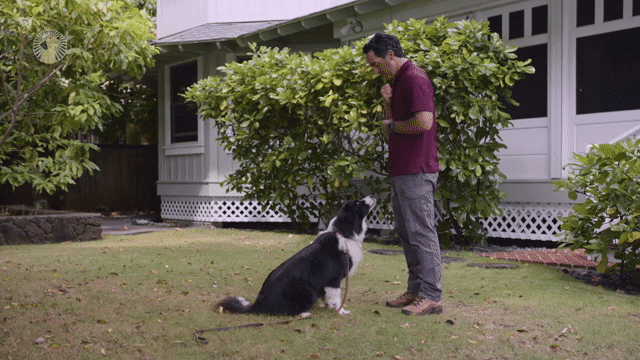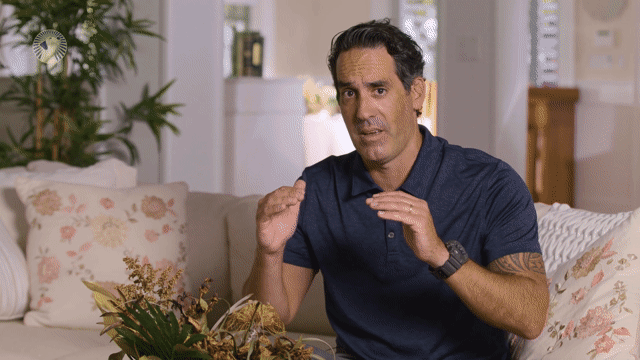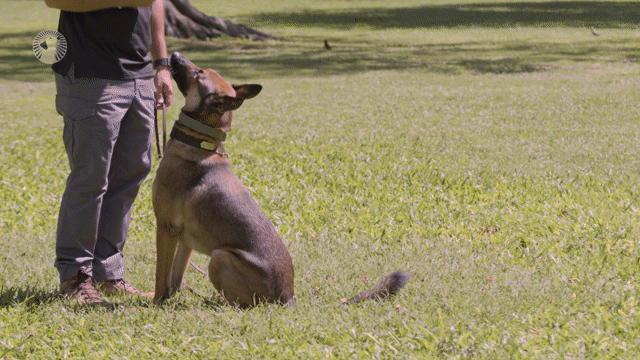How Do I Show Dominance Over My Dog?
The idea of being dominant over your dog is popular in the dog training world, but what does it actually mean to be dominant over your dog? And more importantly, is it something you should even strive for?
The term "dominance" is often used to describe the relationship between animals in the animal world. For example, you might say that a lion is the dominant animal in the pride. This simply means that the lion is the leader of the pack and all of the other animals in the pride look to him for guidance and protection.
In the dog world, the term "dominance" is often used to describe the relationship between a human and their dog. The idea is that, just like in the animal world, the human is the leader of the pack and the dog should look to them for guidance and protection.
There's one major problem with this line of thinking. Dogs are not lions. Neither are you. Nor are you a wolf. This means that the idea of dominance as it applies to the animal world doesn't really make sense when applied to dogs.
As Daniel explains, people often connect the idea of dominance over their dog to violence.
"Just due to human nature, I've found that people start acting rough, they start acting erratic, yanking and cranking on leashes. They start getting upset themselves. The tension goes up and it just isn't good chemistry to train a dog or to even coexist with a dog."
Instead of focusing on this negative reinforcement technique, you will have much greater success if you focus on building a positive relationship with your dog based on leadership, trust, and respect.
"I like to think of it as leadership," Daniel explains. "What can you do to inspire the dog to want to do something or motivate the dog to want to do something? How can you teach the dog the correct behavior? Reinforce it with praise, with reward systems, and of course corrections with a prong collar, a leash, whatever it may be - your voice or even the nudge of the knee or the leg - anything that will correct the dog in that timely manner which will distract them from the wrong behavior."
How Body Language Impacts Dog Training
So how do you build a trusting and respectful relationship with your dog? The first step is to understand how your dog sees the world. Dogs are not humans and they do not think like humans. This means that you need to learn how to communicate with your dog in a way that they will understand.
One of the best ways to do this is through dog body language. Dogs are acutely aware of body language and you can use this to your advantage. By learning to read your dog's body language, you will be able to better understand what they are trying to tell you. And, by being more conscious of your own body language, you can teach yourself to speak to your dog without saying a word.
Structure & Stability Matters
Another important aspect of building a trusting and respectful relationship with your dog is to provide them with structure and stability. Dogs are creatures of habit and they thrive on routine. This means that it's important to establish rules, boundaries, and expectations from the very beginning. Your dog should know what is expected of them and they should be able to rely on you to provide them with the stability they need.
One of the best ways to provide your dog with structure and stability is through training. A well-trained dog is a happy dog. Training gives your dog a sense of purpose and it helps to keep their mind active and engaged. It also allows you to bond with your dog and build a strong relationship.
When it comes to training, there are a few things you should keep in mind. First, make sure that you are consistent. Therefore, you must also train yourself to ensure you maintain consistency. This means using the same commands, the same tone of voice, and the same body language each and every time. Consistency is key when it comes to training your dog.
Second, don't try to do too much at once. Training should be a positive experience for both you and your dog. If you try to do too much at once, you will quickly become overwhelmed and your dog will become frustrated. Start with basic commands such as sit, stay, come, down, and leave it. Once your dog has mastered these commands, you can begin to add more complex commands.
And lastly, make sure you are patient. Dogs learn at their own pace and it is important to be patient while they are learning. If you get frustrated or angry, it will only set your dog back. Be positive and praise your dog when they do something right. This will encourage them to continue learning.
Please consider signing up for our dog training course videos. Daniel offers great insights and demonstrations that will teach you the fundamentals of dog training. You'll be off to building yourself as a leader and transferring that knowledge effortlessly to your dog training sessions.
Useful Ressources

Focus and Attention
The Beacon Dog Academy is a fun, interactive experience for dogs and their owners that will help you build laser-sharp attention skills in any environment.

Problem-Solving Theories
Learn how to correct dog behavior problems (including food possessiveness and aggression) in order to make your life with a dog so much easier.

The Primal Power of Food
How to motivate your dog using food. Learn how to use food throughout your dog’s life to get the best out of them. Become an expert in motivating your dogs!

Building Confidence in Your Dog
This article will help you teach your dog that he can overcome any hurdle, building confidence and a greater bond with you along the way.

The Basics of Dog Psychology
You love your dog, but do you really know what your pup is trying to tell you? Most people don't. Dogs have a complex language of their own, and if we want to learn how to communicate with them on a deep level, we need to understand this language better.

How Do I Stop My Dog from Being Lazy?
Some dogs are naturally energetic, lazy, or somewhere in the middle. But, if your pup is reluctant to meet your energy level, there are a few tips you can try to entice your pup into more fun activities.

Why is My Dog So Distracted?
Modern dogs tend to be quite spoiled. As a result, they have the luxury of paying attention to just about everything else besides you. So, how can you change this perception?

Is it OK to Pin Down Your Puppy?
Pinning down a puppy or dog is also known as an "Alpha roll" and it is definitely not a move that most people are able to perform effectively. If performed incorrectly, it can damage the relationship between you and your puppy.

How Do I Establish Dominance Over My Dog?
The last thing you want is to find yourself in a power struggle with your dog. Your goal as a handler should not be to dominate your dog but to lead them.

How Do I Dominate My Puppy?
Would you ask someone for advice on how to dominate your child? Probably not. So why would you do the same with your puppy?

How Do I Get My Dog to Like Training?
Think about it, if you don't enjoy training your dog, neither will they. To get your dog to like training, you're going to need to find ways to make it more fun!